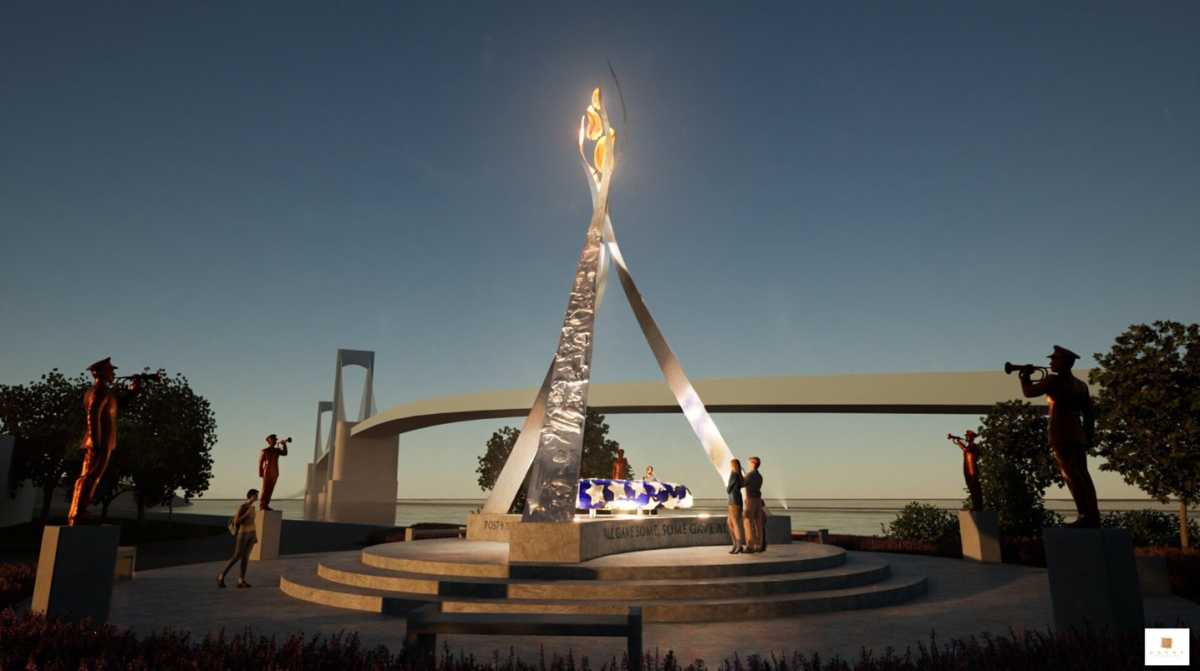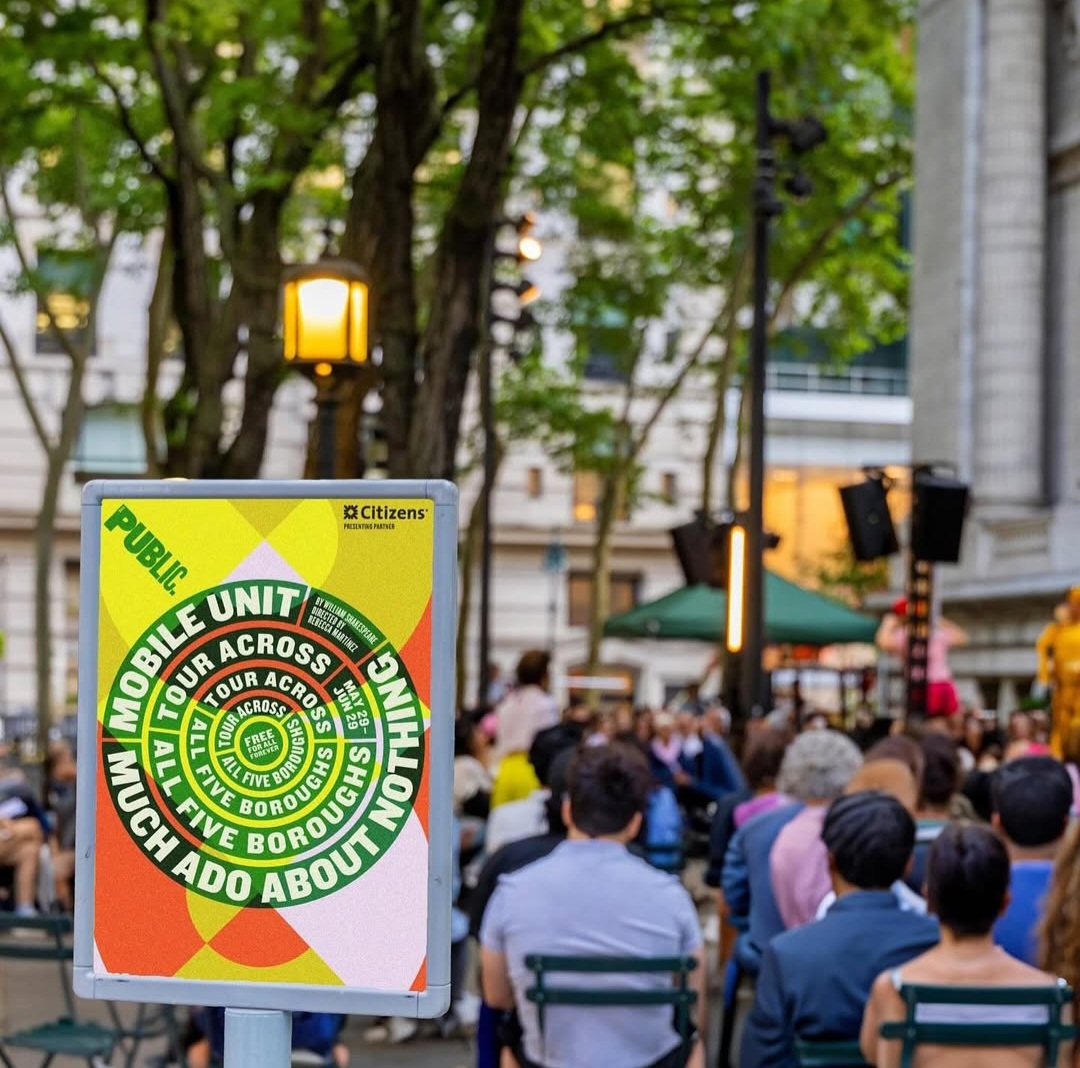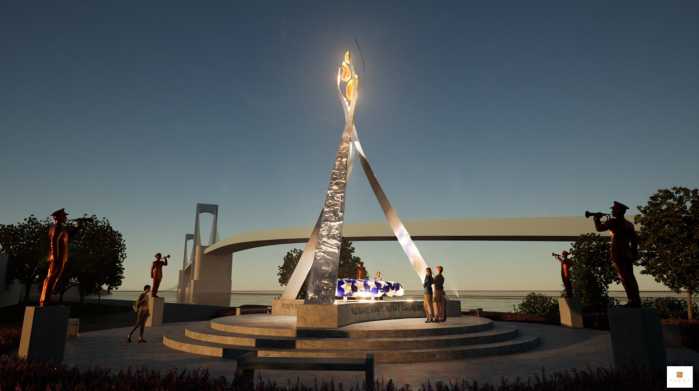By Josh Rogers
Chanting “no allocation without representation,” Councilmember Alan Gerson led protestors outside the Lower Manhattan Development Corporation offices Wednesday to deliver a report calling on the agency to talk to the community more before deciding how to spend the $860 million or so it has left to help Downtown recover from 9/11.
Gerson told about 100 demonstrators that the L.M.D.C. money should be “allocated with full input from you, from the elected leaders, with full hearings — in other words, democracy….We will not allow this money to go to one or two momentous projects for which we can get money elsewhere.”
He delivered an itemized list of projects and groups he thought should be funded, including $204 million to preserve and build affordable apartments, specific allocations ranging from the thousands to the millions for about 100 local cultural, community, business or health groups, and several large projects the L.MD.C. is considered likely to fund at least in part — $215 million for improvements to the East River waterfront and along Pike/Allen Sts., $70 million to build the Downtown section of the Hudson River Park and $25 million for a K-8 school on the East Side.
The money comes out of the $2.78 billion of the federal Community Development Block Grants used to set up the L.M.D.C. and help the area south of Houston St. rebuild. Money so far has gone to things like $750 million to repair utilities damaged on Sept. 11, $300 million on residential grants to encourage people to move and remain in Lower Manhattan, World Trade Center site planning and designs, $164 million to buy and dismantle the Deutsche Bank building across from the W.T.C., and park improvements throughout Lower Manhattan.
The development corporation was created by Gov. George Pataki at the end of 2001 and the agency’s board is now split between appointees of the governor and mayor.
State, city and L.M.D.C. officials have indicated at various times the likelihood of spending large blocks of the remaining money on projects like a rail link connecting Lower Manhattan to the Long Island Rail Road and J.F.K. Airport, World Trade Center cultural buildings, infrastructure for the W.T.C. memorial and offices and the riverside parks.
John Whitehead, chairperson of the L.M.D.C., has said many times that the requests for L.M.D.C. money far exceeds the available funds. In response to a question as to whether the L.M.D.C. might consider public hearings to discuss how to fund the remaining projects, he did not answer directly but said he thought the process has been open.
He said on Thursday that there have been 91 public hearings up until now and if anything, there has been “nearly an excess of democracy” and no secret meetings.
The L.M.D.C. held a series of invitation-only community meetings in every neighborhood south of Houston St. last summer. The agency noted the wide range of ideas for the money in a report last fall and took public comments on the report as well.
Those were the only hearings specifically designed to discuss L.M.D.C. funding issues. Many of the other public hearings were to discuss W.T.C. site and memorial design issues. The agency’s board of directors authorizes it’s partial action spending plans at public meetings and must accept written public comments on the plans before they can be approved by the Dept. of Housing and Urban Development.
Joanna Rose, L.M.D.C. spokesperson, said information about the partial action plans is on the agency’s Web site and is always advertised in local papers, including those printed in Chinese and Spanish. In addition, she said L.M.D.C. staff regularly meets with groups that have applied for money to talk about their proposals.
Gerson said the L.M.D.C. is undoubtedly following public disclosure laws, but the trouble is the community is “not at the table when decisions are made.”
It was a sentiment echoed by many of those who joined Gerson on the march. Rocky Chin, who lost the 2001 Council primary against Gerson and is now president of the Asian American Arts Alliance, said low and middle income Downtowners are not being given enough input.
“Our communities are generally discounted and marginalized,” Chin said. “Once they [L.M.D.C. officials] make those decisions there won’t be much money left.”
He said the biggest priorities were affordable housing and job training.
Mendel Hagler, executive director of Gouverneur Hospital, said the hospital was hoping for $20 million to $30 million to modernize the facility and add nursing home beds. He said health care is an important use of the C.D.B.G. money.
“You need a mix of everything,” he said in City Hall Park. “And there needs to be more of a commitment to involve community leaders.”
Eric Crooke, president of Rutgers Houses on the Lower East Side, said park improvements near the East River was critical. “You need to beautify the area,” he said.
But his friend and neighbor, Michael Steele, said: “Before you do that, you need programs for the teens so they can get off the streets.”
Arthur Gregory, who lives near the Seaport and owns A & M Roadhouse near the W.T.C. site, said more needs to be done so small businesses can navigate the myriad of bureaucracies regulating them.
Gregory said hundreds of his friends and customers were killed on Sept. 11, 2001. In addition to the personal loss, there were also economic effects. He said business is better than a year ago because there are more residents coming to the bar-restaurant in the evening, offsetting the loss of daytime lunch hour customers.
“It’s not as good as it would have been,” said Gregory. “It’s about what it was before 9/11. It would have been double if not for 9/11.”
He opened A & M in 1999 and said it takes time to grow a business.
He likes all of the housing being built, but he thought more of the public money should be used for affordable apartments.
“The private sector does enough for market rate,” he said. “You’ve got to have a mixed community.”
The L.M.D.C. has set aside $50 million to preserve or build at least 300 apartments Downtown and Gerson has proposed adding $200 million more to the housing pot.
After the rally, also attended by Councilmember Chris Quinn, Gerson and an aide headed up to the L.M.D.C. offices to hand deliver the report with a small group of reporters. The development corporation did not allow reporters up.
Gerson said afterwards he thought the report would make the agency rethink its positions, particularly since people from all of the neighborhoods south of Houston St. participated in the rally.
“This has to give them pause when you literally have every neighborhood in the catchment area represented,” he said.
Josh@DowntownExpress.com
WWW Downtown Express


































